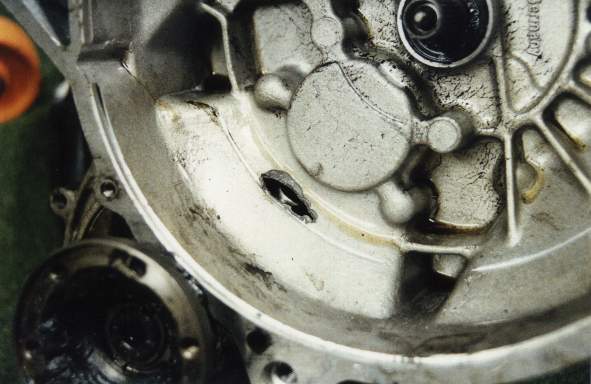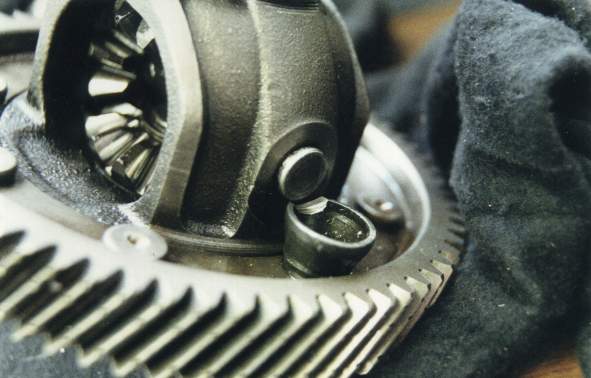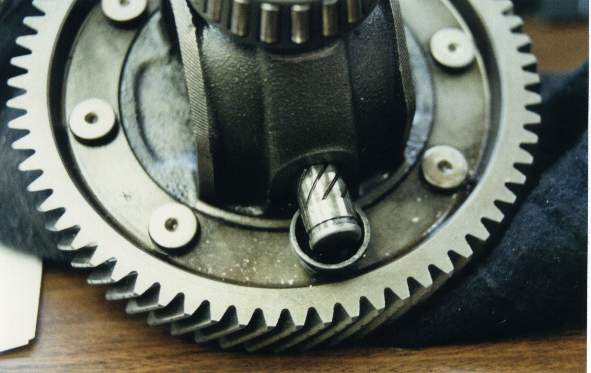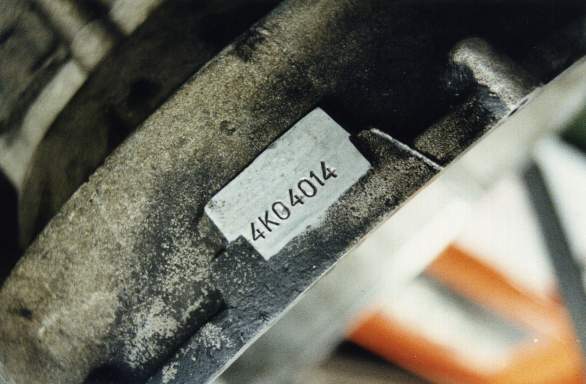|
SMS: Self-Machining Syndrome. My car ran perfectly, then all of a sudden, "Bang", followed almost immediately by lots of clutch slippage. Thankfully, I was only a few blocks from work and limped there. At first, I thought I had broken something in the clutch. But shortly after parking the car, I noticed it was leaking prodigious quantities of tranny oil. When we pulled the tranny this is what we saw:
There's a hole in the tranny with a moving part sticking out! Disassembly revealed more:
There's the cause! VW used these funky rivets with the cup-shaped heads to retain the differential pinion shaft. The shaft has hammer-drilled it's way through one of them. Duh! Rivets are intrinsically made of soft steel. Before VW came up with this brilliant method of retaining the pinion shaft, they used circlips.
The shaft itself shows no sign of damage and minimal wear from acting as a hammer-drill. The shaft is a good, hard, heat treated part. You can also see the nice groove where the circlip could and should have been. It's interesting to note that the damage was not symmetrical. Although you can't see it here, the rivet cup on the opposite side showed almost no wear. Which trannies do are subject to this problem? I used to have the exact date on which VW implemented this abominable production change. Late 1982, I think. The change itself (but not the consequences) are doctmented in the A1 Bentley. No one seems to know exactly when VW started putting circlips in again, 1987 at the earliest.
Here's how to check your tranny's
"serial number" (production date): My story does have a happy ending. I had the hole in the case welded up, put in all new bearings, synchros and a Quaife differential, and it was last seen still going strong 150,000 miles later.
|



